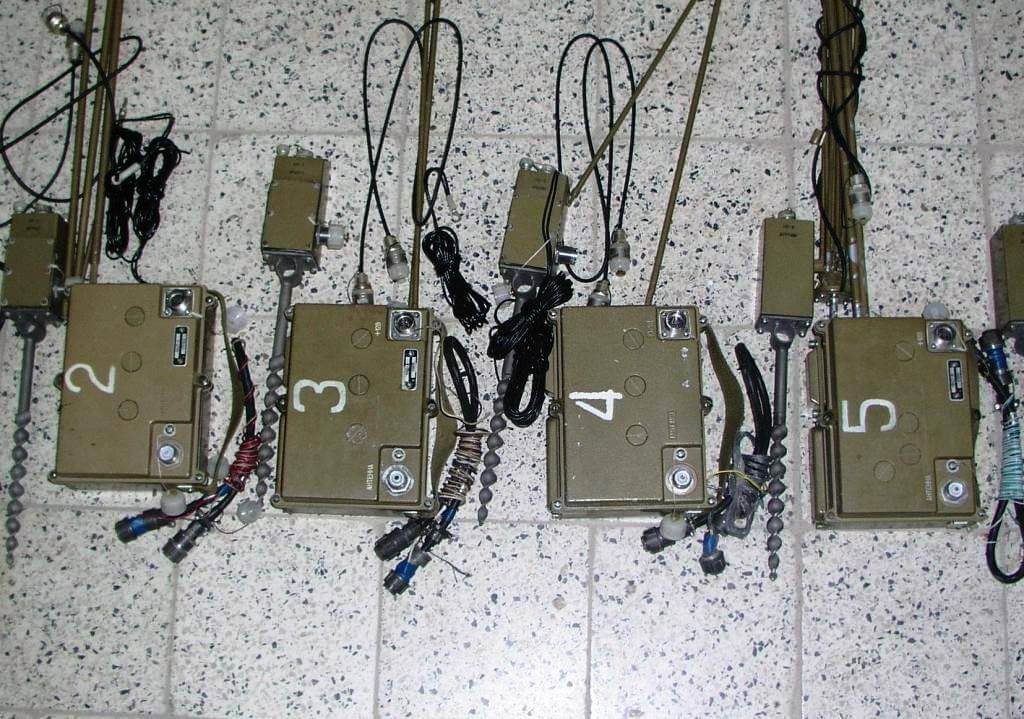
“They are doing better” was the laconic, yet succinct, assessment of one Unmanned Aerial Vehicle (UAV) expert regarding Russia’s application of electronic warfare against such aircraft in Ukraine.
UAVs have been a signature weapon of the Ukraine conflict. Both sides use them for Intelligence, Surveillance and Reconnaissance (ISR) gathering, particularly to aid artillery. This includes commercially available UAVs and dedicated military systems. The former can be ‘tricked-up’ to make them more militarily useful by configuring them to drop grenades, for example. Small sized UAVs can be hard detect by radar due to their small physical size. As such, Electronic Warfare (EW) techniques can help neutralise these aircraft and their pilots.
UAVs depend on a radio link between the pilot and the aircraft. This conveys commands to the aircraft from the pilot and feedback from the aircraft regarding its flight. Commercial UAVs typically use frequencies of 2.4 gigahertz/GHz and 5.8GHz for this link. Additional radio links may let the UAV send its imagery to users elsewhere keen to exploit it for ISR. UAVs will also have Global Navigation Satellite System (GNSS) receivers. These will obtain position, navigation and timing signals from GNSS systems like the US GPS, European Galileo, Russian GLONASS or Chinese Beidou constellations. GNSS signals typically use frequencies of 1.1GHz to 1.6GHz.
EW practitioners have several options available for exploiting a UAV’s radio links. They can jam these links which may cause the UAV to land in situ or return to its point of origin. Alternatively, they can hack into the UAV’s control system via its pilot-UAV radio link and take control of the aircraft. They can then fly it wherever they wish. Alternatively, practitioners can detect and locate the aircraft and its pilot using the radio link between the two. Once the location of the aircraft is determined, it can be engaged by ground-based air defences like anti-aircraft artillery or surface-to-air missiles. Likewise, the pilot’s location can be engaged by artillery.

The utility of UAVs is not lost on the Russian Army’s EW force which has systems capable of detecting and jamming these aircraft deployed with its manoeuvre force. Troops at the tactical edge maybe able to use their Lesochek backpack jammers against UAV radio links. Although Lesochek is ostensibly designed as an improvised explosive device jammer it may have some utility against UAVs. Sources have told Armada it covers a waveband of 30 megahertz to three gigahertz. In theory this means it could attack the 2.8GHz radio link and potentially jam a UAV’s incoming GNSS signals. The MKTK-1A Dzyudoist system deployed by the EW companies of the Russian airborne forces covers a ten megahertz to 18GHz waveband. It is possible that the MKTK-1A can both detect and locate UAVs via their radio links, jamming these. The Torn EW system used by Russian Army reconnaissance units may have similar attributes. This covers a 1.5MHz to three gigahertz waveband. Unlike the MKTK-1A and Lesochek, Torn is only thought capable of detecting and locating the UAVs and possibly their pilot.
Finding their Mojo
Russian electronic warfare had a seemingly troubled start during the first phase of the war. This encompassed Russia’s invasion on 24th February and subsequent withdrawal from Kyiv in early April. Nonetheless, Russian Army electronic warfare acumen against Ukrainian UAVs appears to be improving. The life of a UAV is now considered very short, measured in days. Russian EW success is compounded with UAV pilots possessing “very little training flying fragile machines in an extremely hostile environment” the UAV source revealed.
“Russian use of electronic warfare against UAVs is becoming more organised. They are better than they were,” the source continued. “They have learned lessons from phase 1, principally how important drones are to the Ukrainians”.
Environmental factors may be playing a role. There is now a well-defined frontline stretching across the south and west of Ukraine occupied by Russian forces. While Russian land forces have not covered these regions with EW systems, the source said, they have areas where they act aggressively against UAVs.
Unlike in Kyiv, the Russian Army is now largely fighting in open country. This eases electronic attack against UAVs with less risk that jamming signals may be obscured by large buildings. Both sides are using commercial off-the-shelf UAVs which creates a vulnerability for the Russian armed forces. Information from the Ukraine theatre of operations indicates these aircraft are susceptible to the Russian’s own jamming.
Russia’s jamming efforts against Ukrainian UAVs also have reported shortcomings. Another source told Armada that these “are far from 100 percent effective”. They have struggled to adapt to changes in Ukrainian spectrum use to support UAV operations. Russian EW cadres are good at spotting the frequency a UAV’s link with its pilot use. However, if the pilot then changes that frequency, the EW system needs to be deactivated and switched back on tuned to the new frequency. This makes Russian counter-UAV electronic warfare far from agile.
Nullifying Jamming
One thing to bear in mind is that commercially available UAVs were never designed to fly in electromagnetically contested environments, the source added. Consideration will have to be given to how these aircraft can fly in such environments without being jammed. One possibility is to use machine vision-based navigation packages to equip these UAVs. The modules use artificial intelligence to let the aircraft recognise its surroundings, routes and targets. This would help free the UAV from relying on radio signals during its mission, making it harder to target using EW. One company, rigr.ai, has developed such a payload called the DSP autonomous navigation module. This product will complete development by this autumn and be ready for use.
by Dr. Thomas Withington













